S'sonic
Stealth
Menu
A free template by Lucknowwebs.com for WYSIWYG WebBuilder 8
Powered by Sispro1-S
Nigel G Wilcox
Paragon Of Space Publication
© Copyright Reserved - United Kingdom
Ideal Screen Composition 1024 x 768
SITEMAP
PSEUDO SCIENCE
SCIENCE RESEARCH
ABOUT
Desk
Supersonic
Stealth
Study
Menu
MAIN INDEX
Fastest Air Planes
Space
Transport
Menu
Lockheed F-104 Starfighter
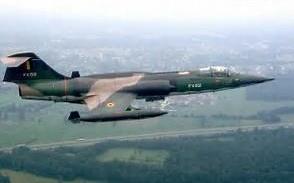


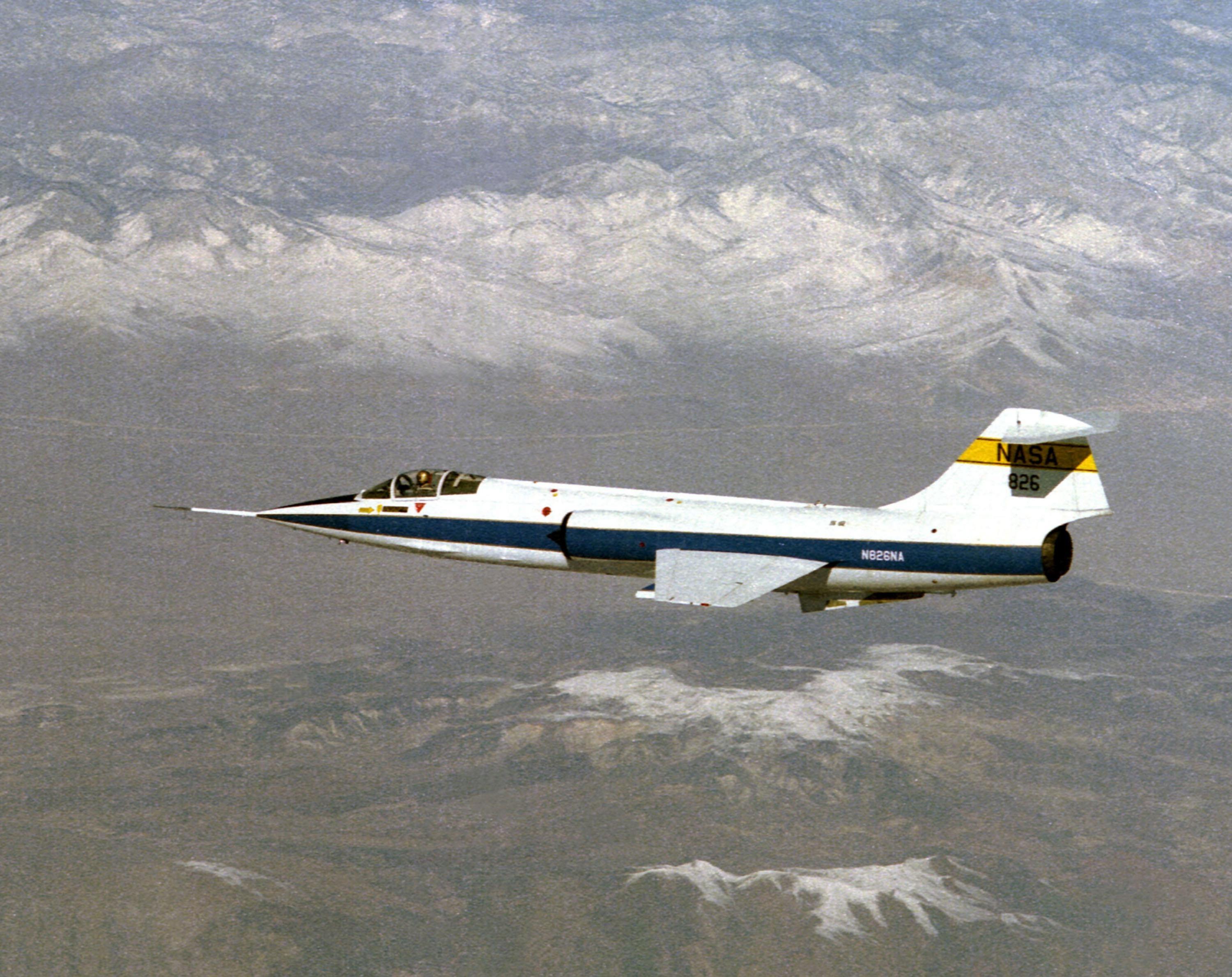
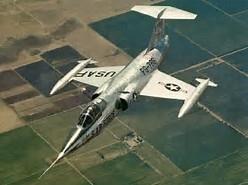
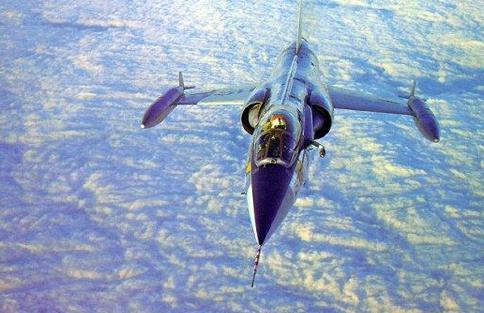
It was the first aircraft to do sustained Mach 2 flight and the first to hold speed and altitude records simultaneously, as well as the first to reach 100,000 feet.
The Starfighter had a terrible safety record. It had tiny wings, a thin, heavy fuselage and a T-tail that created serious aerodynamic issues. In addition, early J79 engines were notoriously unreliable.
The USAF bought some F-104s for the Air Defense Command as stopgap interceptors until F-106s arrived. It also bought some F-104s as interim fighter-bombers until the F-105 was available.
The USAF only purchased 296 F-104s. The small fuselage limited internal fuel capacity and prevented it from having a powerful radar. When F-105s and F-106s arrived, only a year after the F-104 (which was itself delayed), the Zipper was assigned limited duty. Some served in Vietnam.
However, improved F-104s sold very well overseas in smaller nations, serving until 2004. Long range was not important in Europe, and the small nose cone could contain miniaturized radars. This overseas success was tainted when investigators found in 1975 Lockheed spent millions of dollars in bribes to sell aircraft to foreign customers.
NASA used Starfighters as chase planes, and it ordered three NF-104s as astronaut-training planes. With a rocket mounted in its tail, an NF-104 could zoom to over 100,000 feet and give the pilot up to 80 seconds of control practice turning the aircraft using nose and wingtip thrusters. Chuck Yeager famously flew to the edge of space in a NF-104 before the ship tumbled out of control and he had to bail out in the stratosphere. This incident is the central theme in the book “The Right Stuff.”
Prototypes and some F-104As had downward-firing ejection seats due to fear that upward-firing ejection seats could not clear the Starfighter’s high T-tail. However, the overwhelming majority of U.S. and foreign F-104s had traditional, upward-firing ejection seats.
A Small Rocket Ship
In Korea, frustrated Sabre pilots clamored for a day fighter that could fly higher and faster than Soviet MiGs. After visiting them in Korea, Clarence “Kelly” Johnson resolved to give them exactly that. He chose the most powerful engine he could find and built the smallest possible fuselage to hold it. The seat was tilted back 14 degrees, and pilots sat with legs extended. Johnson added vestigial wings, just big enough the get the fighter off the ground.
The new Skunk Works-designed F-104 Starfighter was spectacular. In 1953, the North American F-100 Super Sabre prototype became the first airplane to achieve sustained supersonic flight. Less than a year later , the F-104 raised sustained supersonic flight speed to Mach 2.2. The Starfighter also climbed like a rocket and could reach the edge of space. It was the first aircraft to exceed 100,000 feet. It was also the first aircraft ever to hold speed and altitude records simultaneously, and grabbed climb-to-altitude records as well.
Reporters called it the “missile with a man in it.” Exhilarated pilots called it the Zipper or Zip. It also set a time-to-intercept record. It reached a target at 35,000 feet and 172 miles away in fewer than nine minutes.
Even today, few fighters can surpass its raw speed, climb rate, and ceiling. Kelly Johnson won the Collier Trophy for his design in 1955.
The airplane was a fighter pilot’s aircraft. The cockpit was small, but comfortable. The tilted seat foreshadowed the F-16’s pilot position many years later. It had the best all-around vision of any U.S. fighter until the F-15 and F-16. Zipper pilot Robert Messerli described the experience of flying the F-104 as being like driving a car while sitting on the hood. He lauded the simple and well laid out instrument panel, which focused on firing weapons. He said that the aircraft was extremely stable as a weapons platform and when landing. He also praised the ranging radar for firing weapons.
Messerli also described taking off in a Zipper. As the engine was revved up, the aircraft shuddered and began to skid around even with the brakes fully on. It was like a dog straining on its leash. When the brakes were released, the aircraft shot forward instantly. If the pilot had not pointed it straight up the runway, it could easily run off the edge. Pull up took only 20 seconds from brake release. The plane rapidly reached .9 Mach and continued climbing. In one minute, it reached 20,000 feet. New pilots almost always overshot their level-off altitudes.
Acceleration continued to be astounding after the Zipper reached altitude. From Mach .9, it took less than three minutes to reach Mach 2. With this much acceleration, an F-104 pilot could decide when to engage in combat and when to leave. Coming at the rear of an enemy aircraft, it could rapidly pull within missile range before targets could react.
Technology
To reach Mach 2, the design team had ruthlessly eliminated drag. Wingspan was only 21 feet, and each wing extended only 7 and a half feet from the fuselage. The thin wing tapered from only 4 inches at the root to 2 inches at the wing tip. The front edge of the wing, with a radius of 0.00016 inch, was so sharp that the leading edge needed a protective cover when the jet was on the ground. On first seeing the prototype, Lockheed test pilot Tony Le Vier reportedly asked, “Where are the wings?”
These minimalist wings would not give the maneuverability a fighter would normally have. In addition, the small wings bled off speed rapidly in turns. However, the small wings were necessary to give Mach 2 performance. As test pilot Milton Thompson put it, the F-104 was designed “only to get to high altitude fast and pass the enemy at high-enough speed to avoid a dogfight and retaliatory missile. It was never intended to be a dogfighter; instead, it was a greyhound built to nip at the butt of the pit bulls as it passed by.”
In combat, the Zipper pilot would fly through the enemy formation, put on the brakes, turn the aircraft around, and point its nose at targets. It might do this several times. Its flight path represented lines and hooks. This might seem like an odd way to fight, but it fit the Starfighter perfectly.
To make landing speeds “reasonable,” The F-104 forced engine air through the wings to smooth the airflow and give more lift. With bleed air, the Zipper could land at the challenging but not extreme speed of 160 to 165 knots. If the air-bleed system was not working, landing speeds climbed to 240 knots.
To keep the horizontal tail out of the wing’s turbulence and air shadow, Johnson placed the stabilator (all-moving horizontal tail) at the top of the rudder. Many other aircraft followed this T-tail, including the Boeing 727 airliner. The all-moving stabilator’s bite was strong enough to turn the fighter at 5Gs at Mach 1.5. It gave optimum stability from take-off to Mach 2.
Unfortunately, a T-tail had a major disadvantage in supersonic aircraft. When traditional aircraft stalled, they tended to point their noses down. This improved recovery. However, supersonic aircraft with their thin heavy fuselages that have a pronounced effect on flight compared to the tiny wings, the nose tends to pitch up and tends to continue pitching up. In this deep stall, the horizontal stabilator atop the T-tail is in the shadow of the wings, making it useless when it is needed most.
Perspective
In the end, the F-104 Starfighter had a checkered career marred by numerous crashes, poor performance in USAF roles and the taint of overseas bribery. Yet Kelly Johnson’s hot rod continues to quicken the pulse of everyone who sees one of these aircraft, even when it is just sitting on the ground. Many feel that its raw speed, climb, altitude, and looks made it the most exciting fighter ever built.
General characteristics
Crew: 1
Length: 54 ft 8 in (16.66 m)
Wingspan: 21 ft 9 in (6.63 m)
Height: 13 ft 6 in (4.11 m)
Wing area: 196.1 sq ft (18.22 m2)
Airfoil: Biconvex 3.36% root and tip
Empty weight: 14,000 lb (6,350 kg)
Max takeoff weight: 29,027 lb (13,166 kg)
Powerplant: 1 × General Electric J79 afterburning turbojet, 10,000 lbf (44 kN) thrust dry, 15,600 lbf (69 kN) with afterburner
Performance
Maximum speed: 1,528 mph; 2,459 km/h (1,328 kn)
Maximum speed: Mach 2
Combat range: 420 mi (365 nmi; 676 km)
Ferry range: 1,630 mi (1,416 nmi; 2,623 km)
Service ceiling: 50,000 ft (15,000 m)
Rate of climb: 48,000 ft/min (240 m/s) Initially
Lift-to-drag: 9.2
Wing loading: 105 lb/sq ft (510 kg/m2)
Thrust/weight: 0.54 with max. takeoff weight (0.76 loaded)
Armament
Guns: 1 × 20 mm (0.787 in) M61A1 Vulcan 6-barreled Gatling cannon, 725 rounds
Hardpoints: 7 with a capacity of 4,000 lb (1,800 kg),with provisions to carry combinations of: Missiles: 4 × AIM-9 Sidewinder
Other: Bombs, rockets, or other stores.
Role: Interceptor aircraft, fighter-bomber
National origin: United States
Manufacturer: Lockheed
First flight: 17 February 1956 (YF-104A)
Introduction: 20 February 1958
Retired: 31 October 2004 (Italy)
Status: Retired, except for private operators
Primary users: United States Air Force
German Air Force
Japan Air Self-Defense Force
Turkish Air Force
Number built: 2,578
Unit cost: US$1.42 million (F-104G)
Developed from: Lockheed XF-104
Variants: Lockheed NF-104A
Canadair CF-104
Aeritalia F-104S
Developed into: CL-1200 Lancer and X-27,
Lockheed CL-288
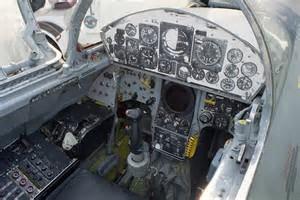

The Lockheed F-104 Starfighter is a single-engine, supersonic interceptor aircraft which later became widely used as an attack aircraft. It was originally developed by Lockheed for the United States Air Force, but became widely used by US Allies around the world, and produced by several other NATO nations. One of the Century Series of fighter aircraft, it was operated by the air forces of more than a dozen nations from 1958 to 2004. Its design team was led by Kelly Johnson, who went on to lead or contribute to the development of the Lockheed SR-71 Blackbird and other Lockheed aircraft.
Maximum speed: 2,137 km/h (1,328 mph) Maiden flight: 04 Mar 1954 Length: 54.66 ft Wingspan: 20.87 ft Cruising speed: 925.37 km/h (575 mph).












